Sisal Space Makers
During 2017-2018 I have been working with artisans in Yucatan to explore the spatial possibilities of sisal with the grant Jóvenes Creadores from FONCA, the Mexican National Fund for Culture and Arts.
Photos by Sergio López

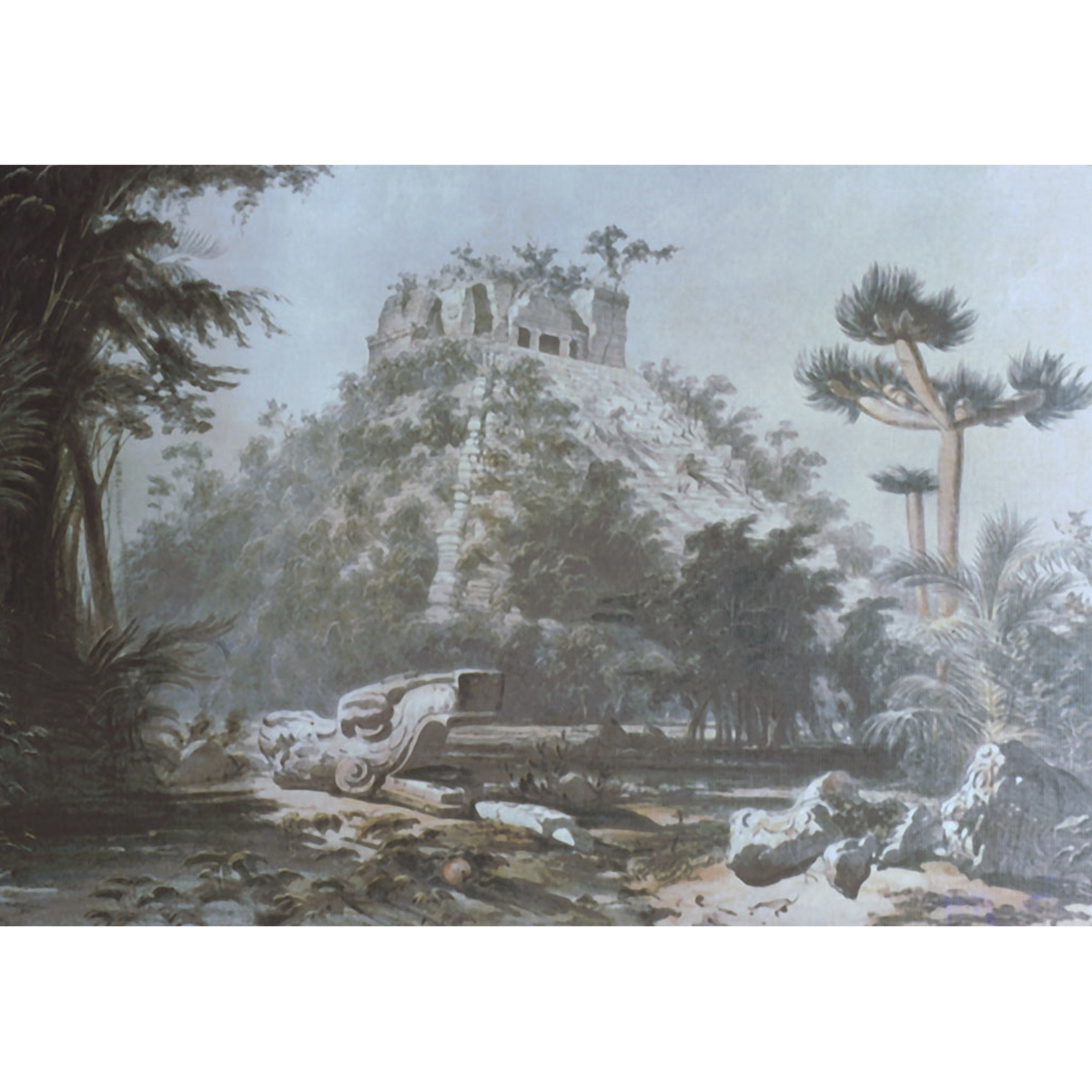

This piece is called Kukulkan after the Mayan deity, the feathered serpent.
Kukulkan is worshiped at Chichen Itzá. At the equinox it seems the snake decends from the staircase of the Castillo pyramid. Here is an image drawn by Frederick Catherwood in the year 1843, when the ruins where still covered.
I added an other image of Kukulkan (the left figure) from the temples of Yaxchilan. This pieces is now at the British Museum.
The sisal is dyed with the rind of the Tzalam tree in combination with different proportions of iron to modify the color.
Aprox. 4 meters in length, diameter 35 cm.
Kukulkan is worshiped at Chichen Itzá. At the equinox it seems the snake decends from the staircase of the Castillo pyramid. Here is an image drawn by Frederick Catherwood in the year 1843, when the ruins where still covered.
I added an other image of Kukulkan (the left figure) from the temples of Yaxchilan. This pieces is now at the British Museum.
The sisal is dyed with the rind of the Tzalam tree in combination with different proportions of iron to modify the color.
Aprox. 4 meters in length, diameter 35 cm.


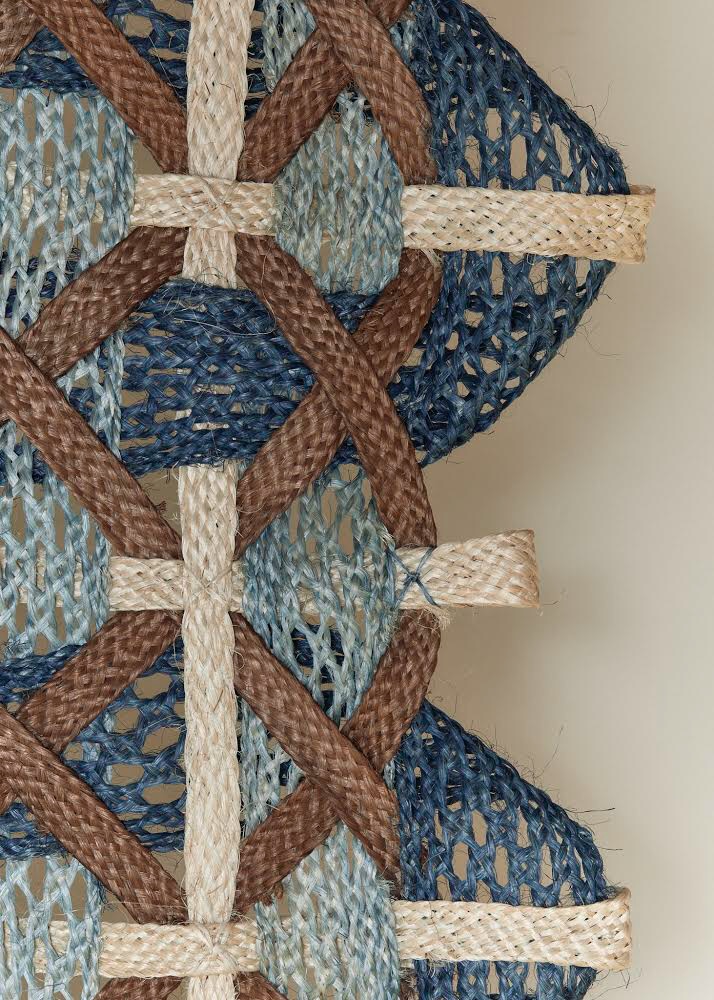
This piece is named Wanchojang, after the Korean art of weaving baskets and mats from wancho, a type of grass known as sedge.
In 1905 more than a thousand Koreans arrived in Yucatan peninsula, fleeing a war with Japan in their home country. They came to Mexico in search of a brighter future and in stead at their arrival they were sold off to work at the sisal haciendas under the same harsh conditions as the local Mayans.
This piece questions if the Koreans that arrived in Yucatan applied the techniques they knew to the sisal fiber. Maybe today there are still artisanal techniques in use that the Koreans brought with them.
This is a screen woven with sisal braids that are made by artisans in Yucatan, dyed with the rind of the tzalam tree and with indigo.
The screen has a different front and back.
205 cm x 85 cm
In 1905 more than a thousand Koreans arrived in Yucatan peninsula, fleeing a war with Japan in their home country. They came to Mexico in search of a brighter future and in stead at their arrival they were sold off to work at the sisal haciendas under the same harsh conditions as the local Mayans.
This piece questions if the Koreans that arrived in Yucatan applied the techniques they knew to the sisal fiber. Maybe today there are still artisanal techniques in use that the Koreans brought with them.
This is a screen woven with sisal braids that are made by artisans in Yucatan, dyed with the rind of the tzalam tree and with indigo.
The screen has a different front and back.
205 cm x 85 cm
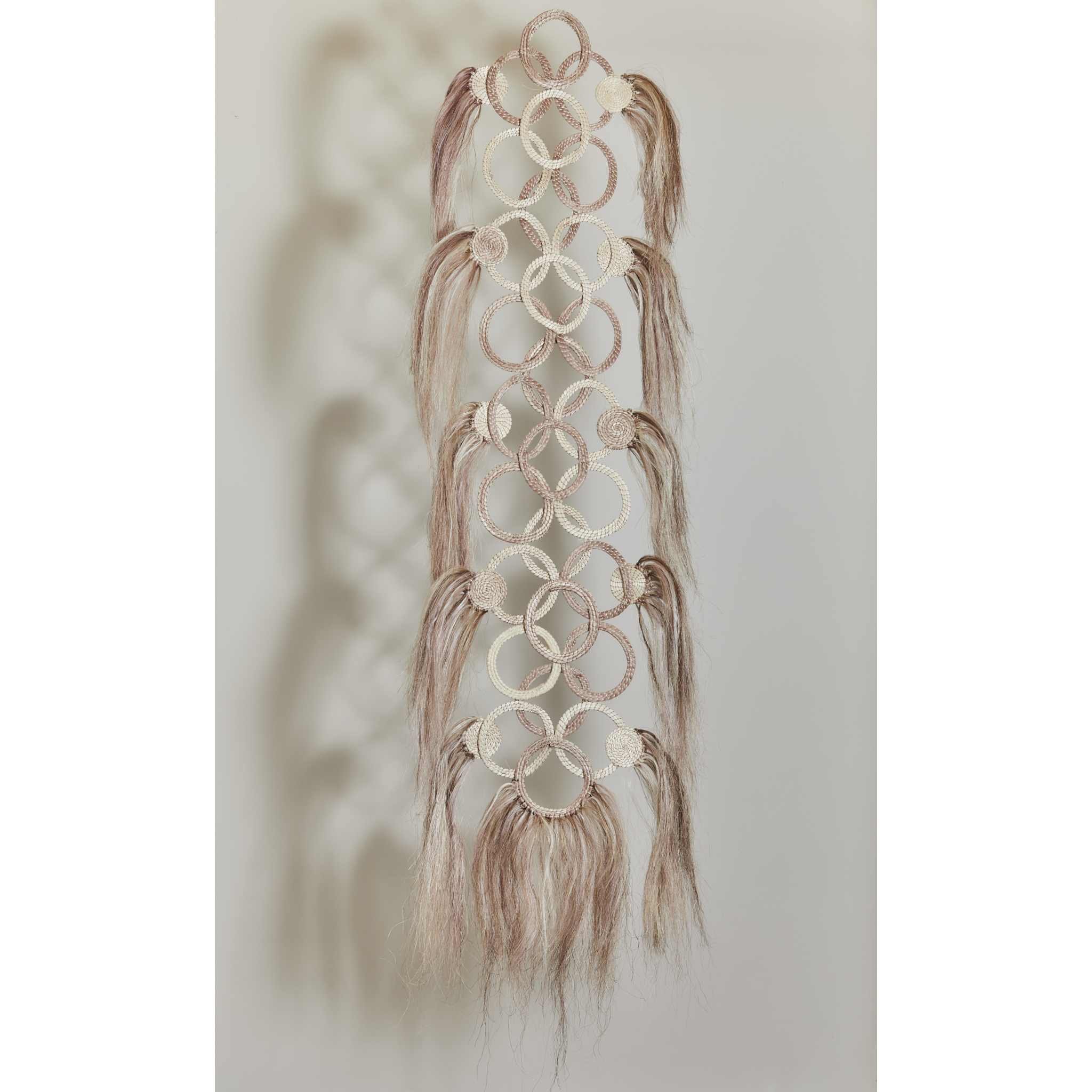


The Pascola is a Yaqui (and Mayo) character that is a ceremonial host, clown and dancer that during festivities creates a connection between its community and the world of spirit.
For centuries the Yaqui have fought to maintain their land and traditions that were under attack since the colonization of Mexico. During the presidency of Porfirio Diaz (1884-1911) the majority of their land was seized and Yaquis were sold as slaves to work in various regions of Mexico. The majority of them were bought by the haciendas in Yucatan, to work on their sisal plantations. Two-thirds of them died within a year of arriving.
Stitched sisal, dyed with the rind of Tzalam and cochineal
240 cm x 90 cm
For centuries the Yaqui have fought to maintain their land and traditions that were under attack since the colonization of Mexico. During the presidency of Porfirio Diaz (1884-1911) the majority of their land was seized and Yaquis were sold as slaves to work in various regions of Mexico. The majority of them were bought by the haciendas in Yucatan, to work on their sisal plantations. Two-thirds of them died within a year of arriving.
Stitched sisal, dyed with the rind of Tzalam and cochineal
240 cm x 90 cm

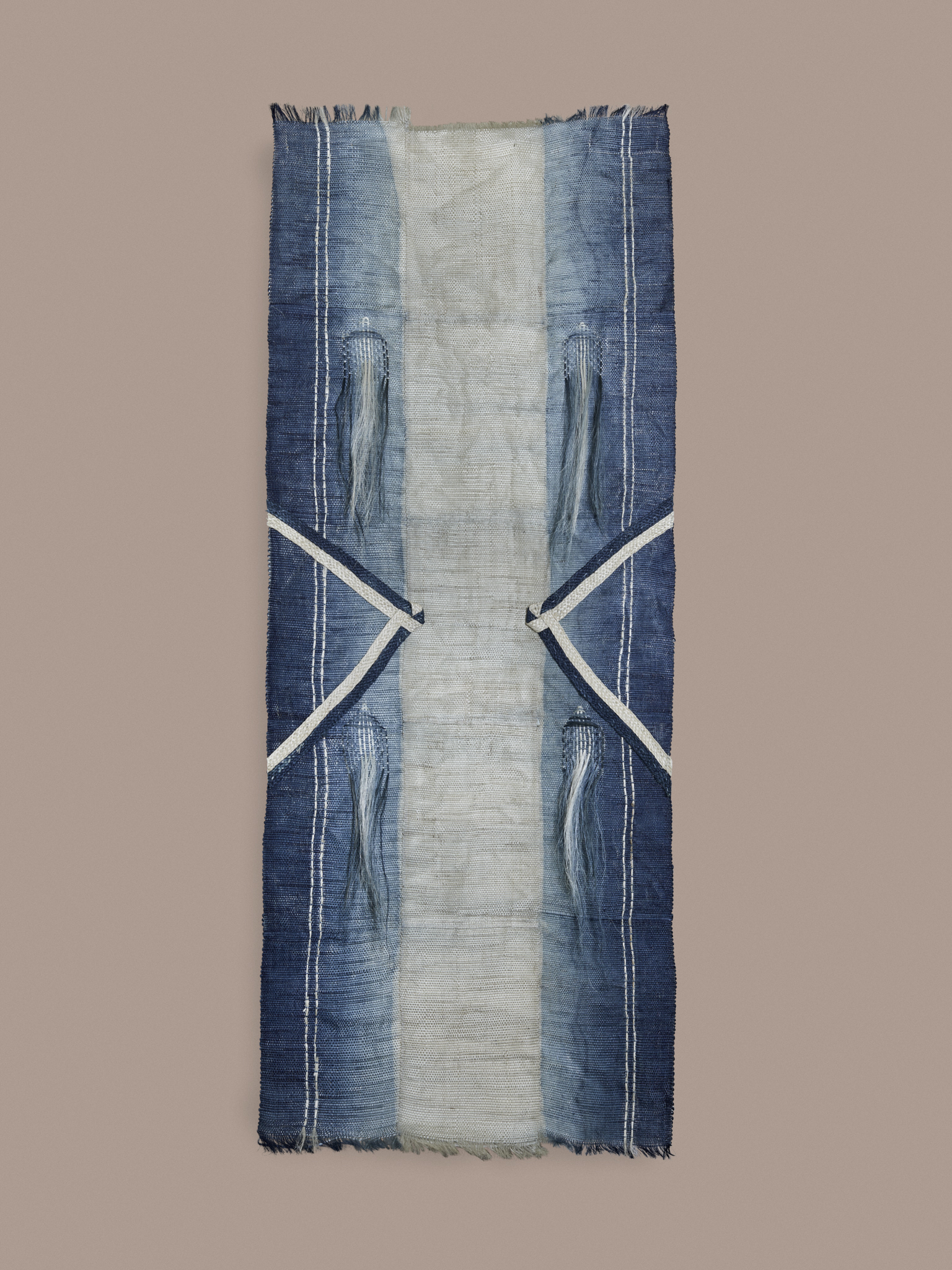
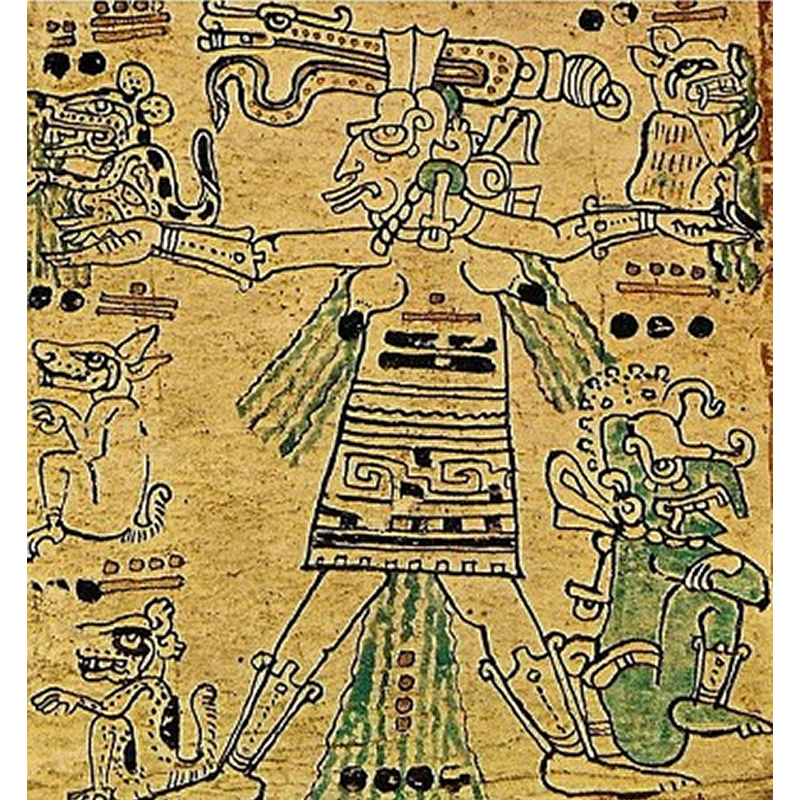
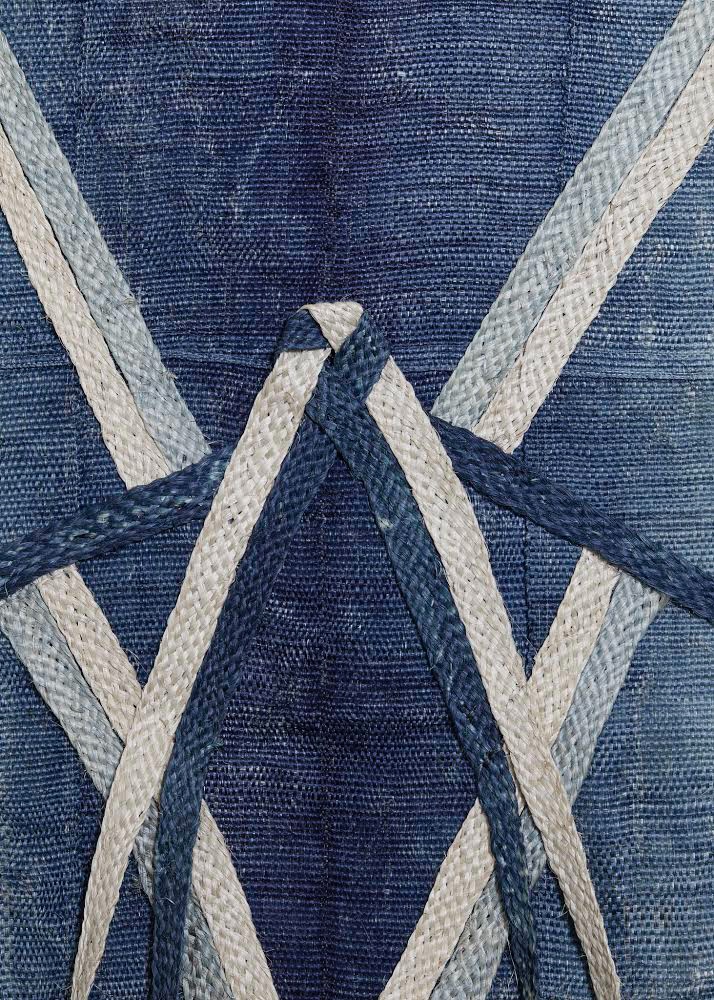
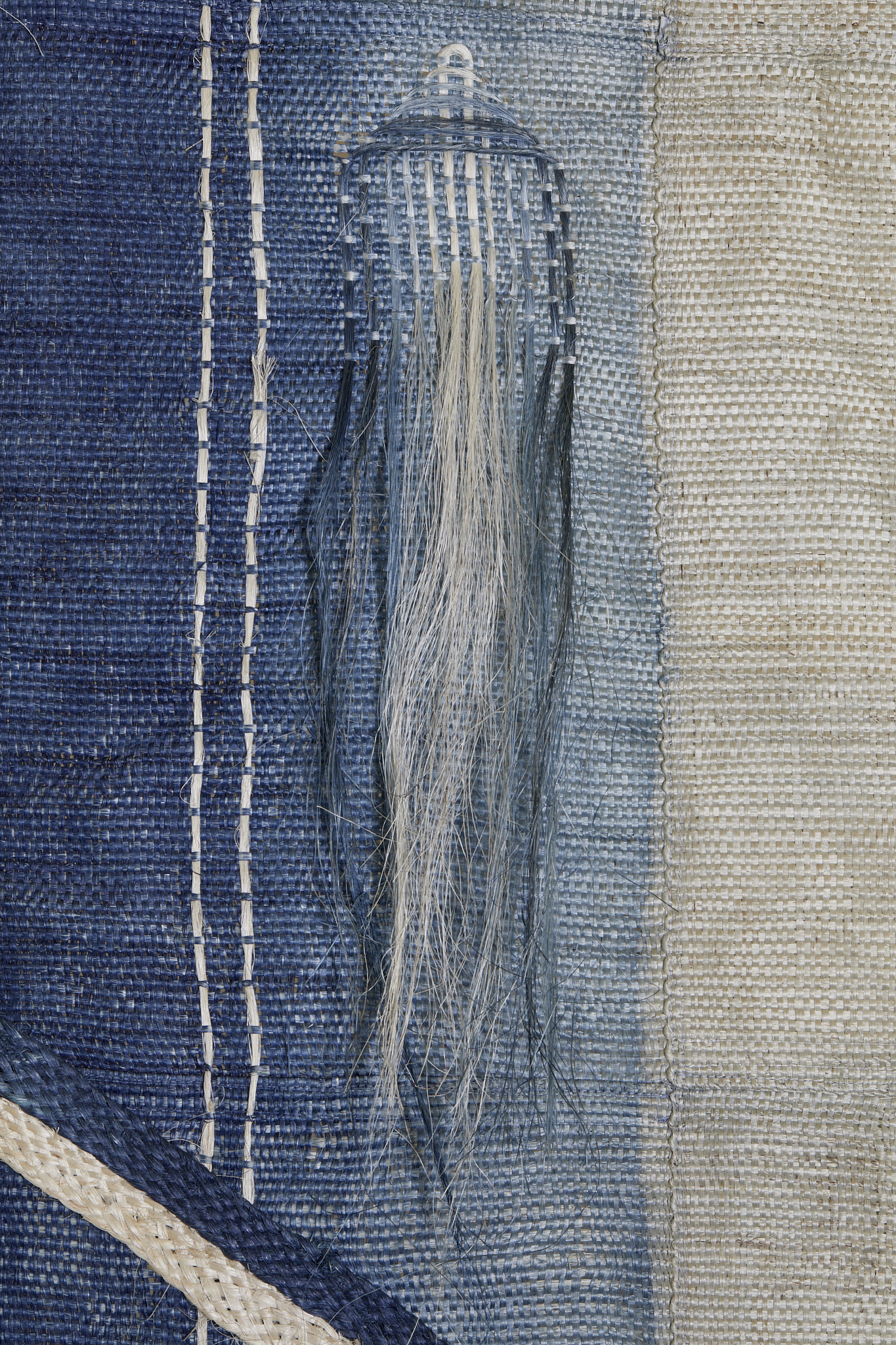
This diptich is made to honor the Mayan goddess Ixchel.
Ixchel is the goddess of fertility, medicine, the moon and of textiles. She was mainly venerated for her healing and birthing qualities. She is sometimes portrayed weaving on a backstrap loom.
This image of Ixchel is in the Madrid Codex.
Backstrap woven sisal, embroidered, dyed with indigo.
250 cm x 110 cm
Ixchel is the goddess of fertility, medicine, the moon and of textiles. She was mainly venerated for her healing and birthing qualities. She is sometimes portrayed weaving on a backstrap loom.
This image of Ixchel is in the Madrid Codex.
Backstrap woven sisal, embroidered, dyed with indigo.
250 cm x 110 cm

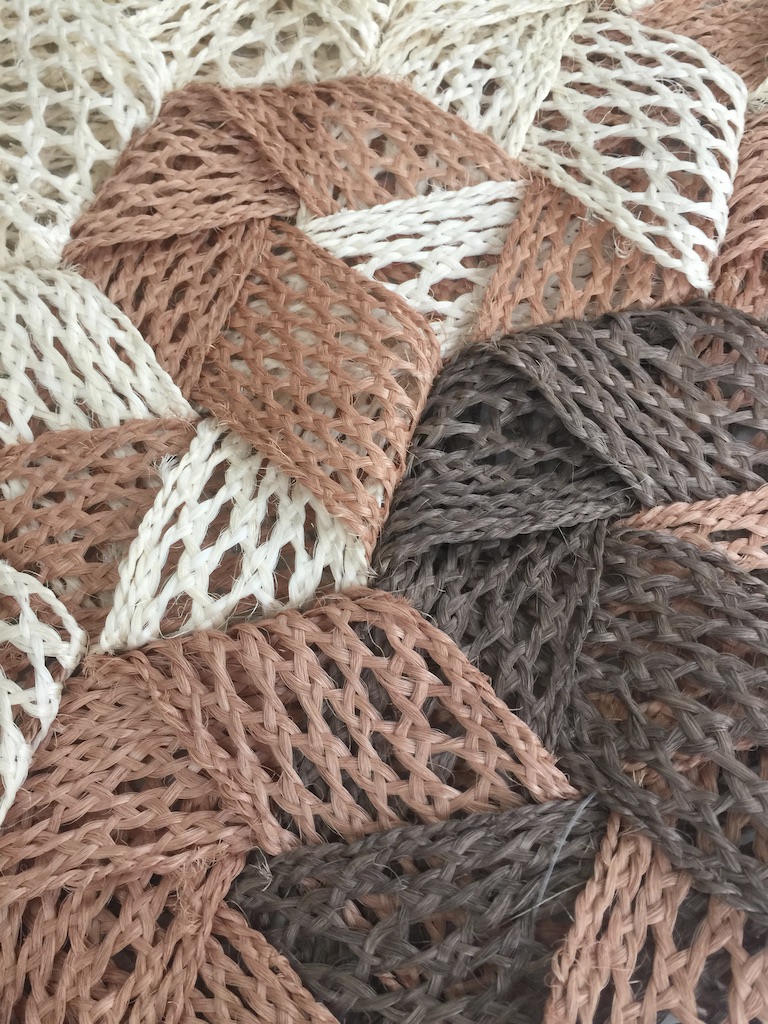

The sisal screen Trenza, is an ensemble of braids.
The basis is an open braid woven by the artisans of Yucatan that is then combined with an other braiding technique that I am confident the artisans will be able to master.
The intention of these new designs is
to try to open up a new market for the sisal products, in order to create a more sustainable income for the artisans of Yucatan and to create a greater demand for the sisal fiber.
The piece is dyed with the rind of the Tzalam tree.
240 cm x 70 cm
The basis is an open braid woven by the artisans of Yucatan that is then combined with an other braiding technique that I am confident the artisans will be able to master.
The intention of these new designs is
to try to open up a new market for the sisal products, in order to create a more sustainable income for the artisans of Yucatan and to create a greater demand for the sisal fiber.
The piece is dyed with the rind of the Tzalam tree.
240 cm x 70 cm
Emma GvLB - 2025